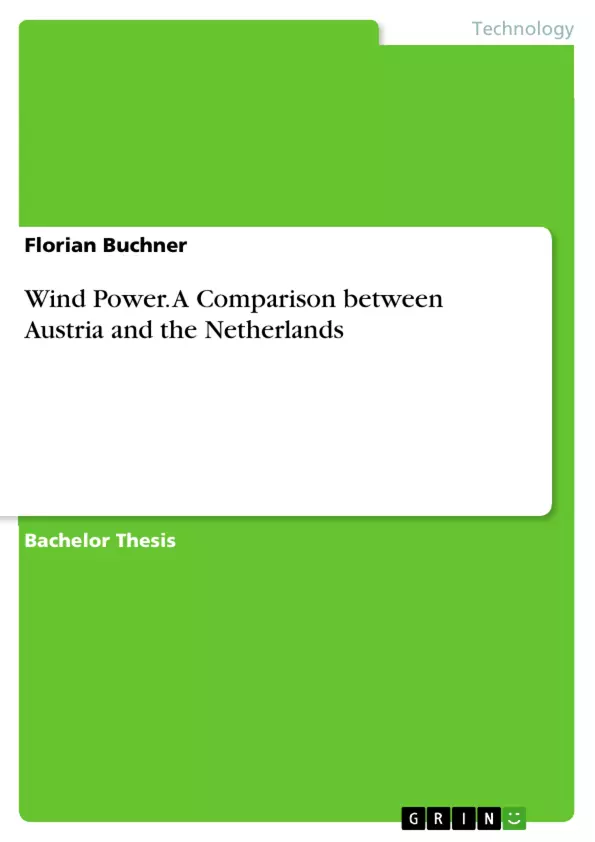Fossil fuels are essential for energy purposes in the world. About 80% (91,000 TWh) of the total primary energy supply and 64% (9400 TWh) of the electricity generation were produced with gas, oil and coal in 1999 (Jacobsson/Bergek, 2004: 815). However, this dominance is in context of clear environmental and climate challenges. The burning of fossil fuels is the main source of carbon dioxide emissions and it is growing with a rate of 0.5% per year. Moreover, due to the fact that those fuels are finite, it will become more difficult and more expensive to pursue an economical exploitation of these resources (Agterbosch, 2006: 13-14).
The European Union is going to implement and to enhance renewable energy technologies in order to secure energy supplies and to reduce dependence (about 54% of primary energy consumption in 2005 was imported, in 2000: 51%; EEA, 2008). For this purpose a comprehensive climate change package (20/20/20 by 2020: Europe`s climate change and energy package) was introduced in 2008 (EP, 2008). According to this program each Member State of the EU has received legally binding targets to reach the 20% share of renewable energy in the EU`s overall energy consumption till 2020 (EEP, 2008a; EEP, 2008b).
Consequently, the government of each Member State is trying to stimulate with various measures and efforts the development and use of renewable energy.
This paper investigates the institutional and social conditions, which are responsible for the successful (and failed respectively) implementation of renewable electricity technologies of two Member States of the EU, Austria and the Netherlands. It focuses on wind energy for electricity generation, analyses the evolution of the wind power supply market and examines the liberalisation of the electricity market in both countries. The main objects of this thesis are:
• To investigate the way of each government, in how to boost and to enhance renewable (wind) energy in its country in the last decades.
• To contrast the assets with the drawbacks of each wind power policy.
And, based on these insights,
• To analyse, how comparative are those ways and which instrument is recommendable for the other country.
Inhaltsverzeichnis (Table of Contents)
- Introduction
- Wind power in the Netherlands
- Overview
- Overall energy structure
- Electric power sector
- Renewable electricity production
- Governmental actions to increase renewable (wind) energy
- Wind energy policy 1975 - 1994
- Policy performance between 1975 till 1994
- Review of the wind power policy 1975-1994
- Wind energy policy 1995 - 2007
- Policy performance between 1995 till 2007
- Review of the wind power policy 1995 - 2007
- Summary
- Wind power in Austria
- Overview
- Overall energy structure
- Electric power sector
- Renewable electricity production
- Development of wind power in Austria
- Wind energy policy from the 1970's till 2008
- Policy performance in Austria
- Review of the wind power policy
- Summary
- Comparison
- References
Zielsetzung und Themenschwerpunkte (Objectives and Key Themes)
This paper examines the implementation of renewable electricity technologies, specifically wind energy, in Austria and the Netherlands. It aims to analyze the evolution of wind power supply markets and the impact of electricity market liberalization in both countries.
- The role of government policy in promoting wind energy
- Comparative analysis of wind energy policies in Austria and the Netherlands
- The impact of market liberalization on wind power development
- The effectiveness of different policy instruments in encouraging wind energy growth
- The challenges and obstacles to wind energy implementation in both countries
Zusammenfassung der Kapitel (Chapter Summaries)
Chapter 1: Introduction introduces the need for renewable energy in Europe, citing the environmental and economic challenges associated with fossil fuels. The chapter highlights the European Union's commitment to renewable energy through its 20/20/20 by 2020 program and the corresponding efforts of individual Member States to promote renewable energy.
Chapter 2: Wind power in the Netherlands provides an overview of the Netherlands' energy structure and electric power sector. It delves into the country's wind energy policy from 1975 to 2007, analyzing policy performance and challenges.
Chapter 3: Wind power in Austria offers a similar analysis of Austria's wind energy development, covering its energy structure, electric power sector, and wind energy policy from the 1970's to 2008.
Schlüsselwörter (Keywords)
This paper focuses on the themes of energy policy, wind power, and the comparative analysis of wind energy development in Austria and the Netherlands. The study also examines the impact of market liberalization on wind power implementation.
- Citation du texte
- Dipl.-Ing. Florian Buchner (Auteur), 2009, Wind Power. A Comparison between Austria and the Netherlands, Munich, GRIN Verlag, https://www.grin.com/document/292684



